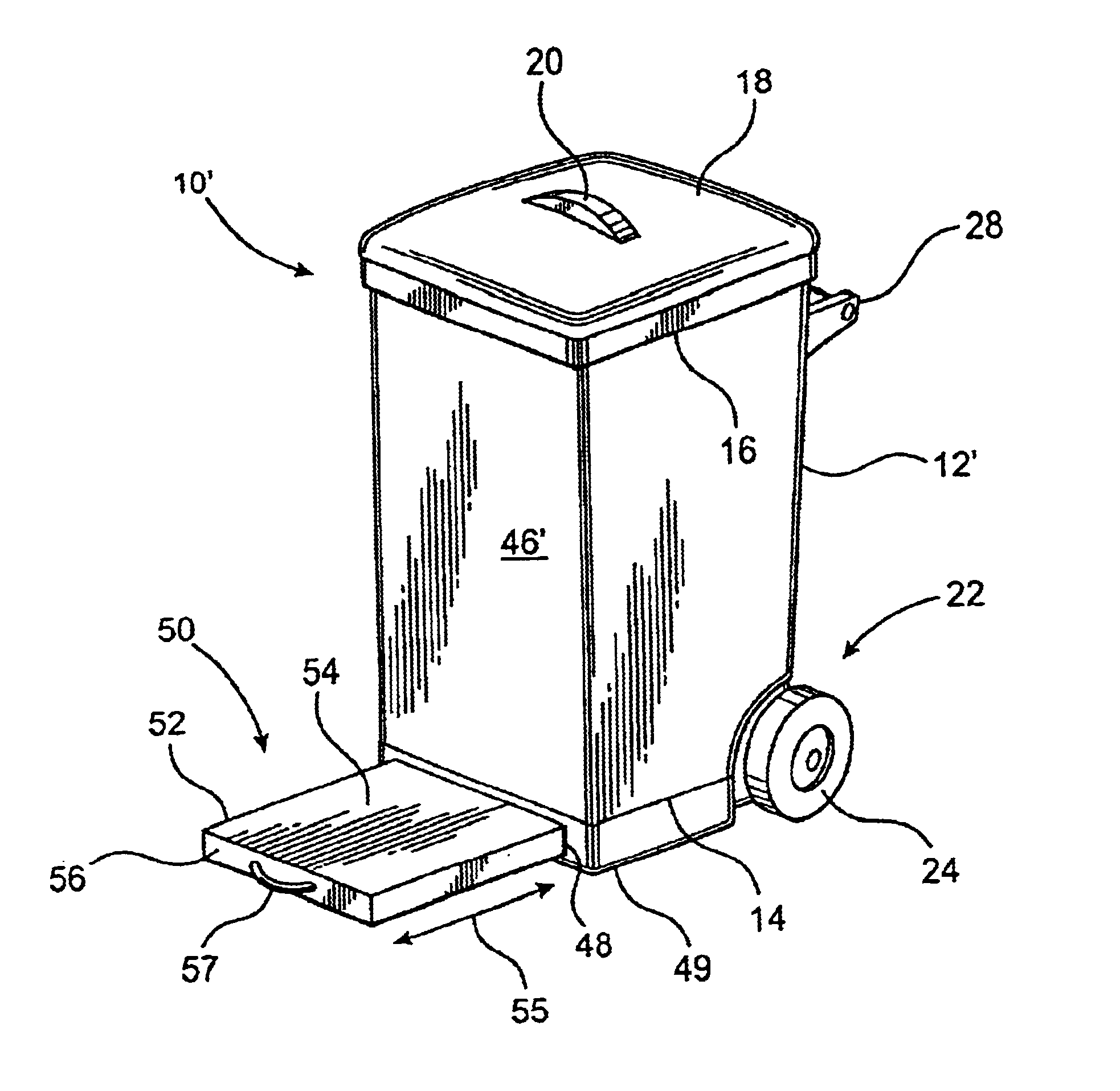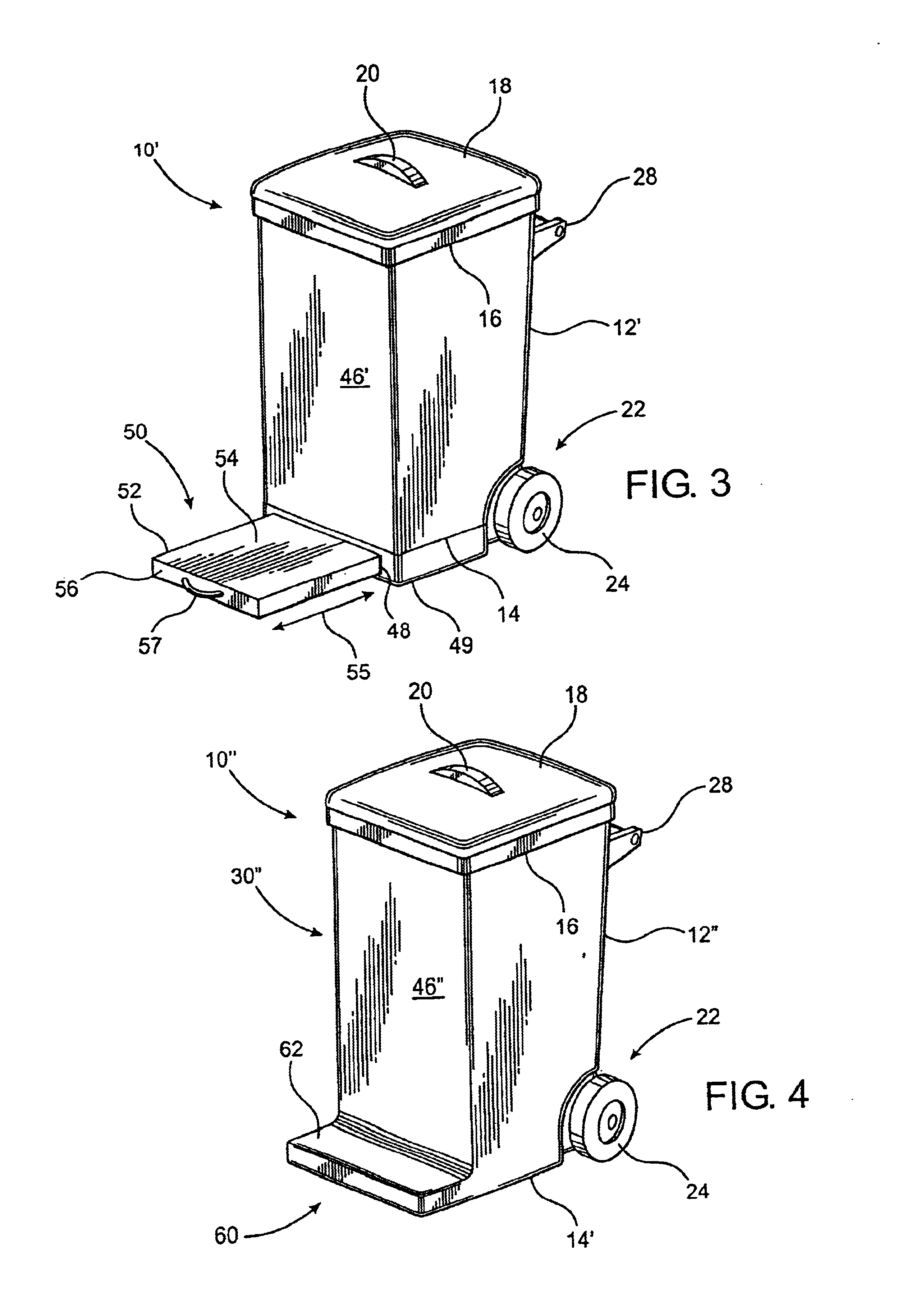Container assembly with supplementary support structure
a technology of supporting structure and container, applied in the field of container assembly, can solve the problems of inconvenient transportation of one or more additional containers, poor biodegradable characteristics of recycled materials, and the inconvenience of having to transport all of the collected refuse or garbage,
- Summary
- Abstract
- Description
- Claims
- Application Information
AI Technical Summary
Benefits of technology
Problems solved by technology
Method used
Image
Examples
Embodiment Construction
[0033]As shown in the accompanying Figures, the present invention is directed towards a container assembly, indicated generally by reference numeral 10 in FIGS. 1 and 2, which is primarily, but not exclusively, intended for use in collecting, storing and transporting a variety of trash or garbage. The container assembly, generally indicated as 10, includes a housing 12 having a hollow interior and a closed end portion 14, which preferably, but not necessarily is located at the bottom end of the housing 12. The container assembly also includes an access opening 16 which communicates with the hollow interior of the housing, and which preferably is disposed at the opposite end of the housing 12. The access opening 16 is dimensioned and configured to facilitate the deposit and removal of a variety of materials or objects into and out of the hollow interior for the collection, temporary storage and eventual removal thereof. A lid structure 18 is preferably also provided, which ideally, i...
PUM
 Login to View More
Login to View More Abstract
Description
Claims
Application Information
 Login to View More
Login to View More - R&D
- Intellectual Property
- Life Sciences
- Materials
- Tech Scout
- Unparalleled Data Quality
- Higher Quality Content
- 60% Fewer Hallucinations
Browse by: Latest US Patents, China's latest patents, Technical Efficacy Thesaurus, Application Domain, Technology Topic, Popular Technical Reports.
© 2025 PatSnap. All rights reserved.Legal|Privacy policy|Modern Slavery Act Transparency Statement|Sitemap|About US| Contact US: help@patsnap.com



